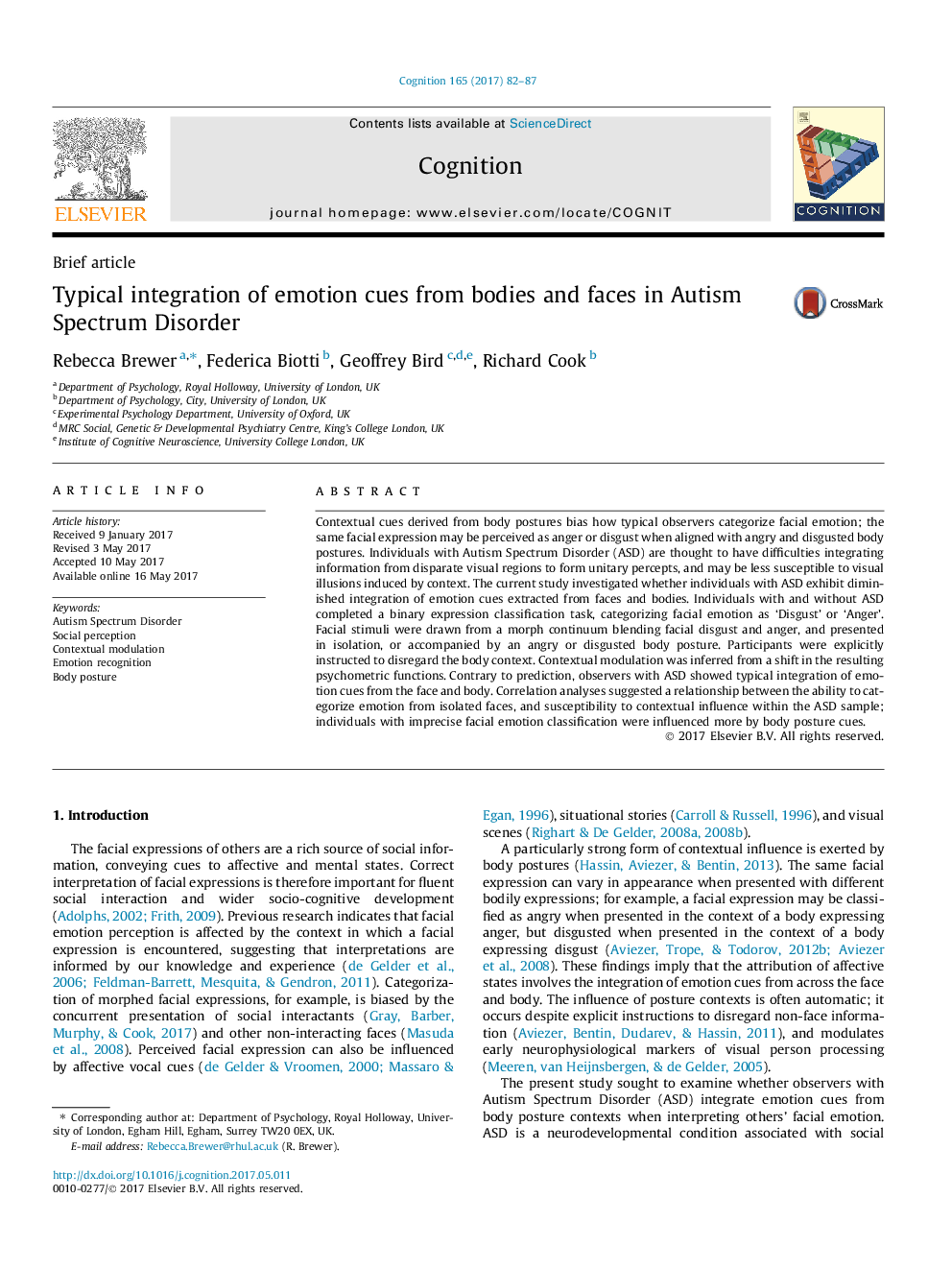| کد مقاله | کد نشریه | سال انتشار | مقاله انگلیسی | نسخه تمام متن |
|---|---|---|---|---|
| 5041512 | 1474102 | 2017 | 6 صفحه PDF | دانلود رایگان |
- Cues to another's emotion are automatically integrated across the face and body.
- We tested integration of face and body emotion cues in Autism Spectrum Disorder.
- Integration of face and body emotion cues in individuals with autism was typical.
- Reliance on body cues was greatest in those with poor facial emotion classification.
Contextual cues derived from body postures bias how typical observers categorize facial emotion; the same facial expression may be perceived as anger or disgust when aligned with angry and disgusted body postures. Individuals with Autism Spectrum Disorder (ASD) are thought to have difficulties integrating information from disparate visual regions to form unitary percepts, and may be less susceptible to visual illusions induced by context. The current study investigated whether individuals with ASD exhibit diminished integration of emotion cues extracted from faces and bodies. Individuals with and without ASD completed a binary expression classification task, categorizing facial emotion as 'Disgust' or 'Anger'. Facial stimuli were drawn from a morph continuum blending facial disgust and anger, and presented in isolation, or accompanied by an angry or disgusted body posture. Participants were explicitly instructed to disregard the body context. Contextual modulation was inferred from a shift in the resulting psychometric functions. Contrary to prediction, observers with ASD showed typical integration of emotion cues from the face and body. Correlation analyses suggested a relationship between the ability to categorize emotion from isolated faces, and susceptibility to contextual influence within the ASD sample; individuals with imprecise facial emotion classification were influenced more by body posture cues.
Journal: Cognition - Volume 165, August 2017, Pages 82-87
